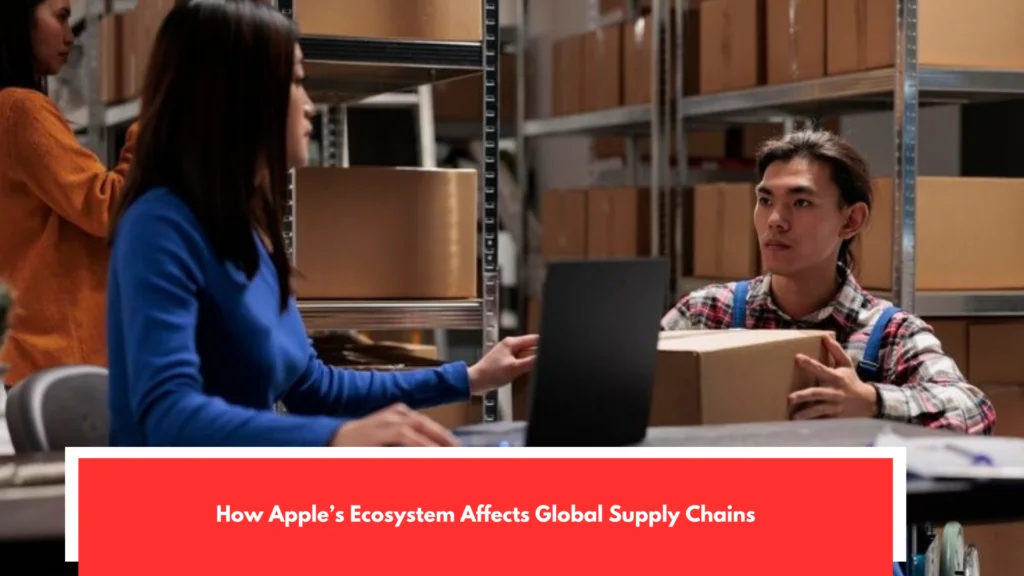Apple today called on its global supply chain to take further steps to reduce greenhouse gas emissions and adopt a comprehensive approach to carbon neutrality. The company will evaluate the work of its key manufacturing partners to decarbonize Apple-related operations, such as operating with 100% renewable electricity, and will monitor their progress annually. Apple’s global corporate operations have been carbon neutral since 2020, and the company is focused on its ambitious goal of eliminating carbon emissions across its entire global supply chain and the lifecycle of every product. This commitment is closely linked to broader issues such as how Apple’s ecosystem affects global supply chains, influencing everything from sourcing materials to manufacturing and distribution practices worldwide.
As the impacts of climate change increasingly affect the world, Apple has announced new initiatives and investments to help decarbonize the global economy and advance innovative climate solutions for communities. These include significant investments in renewable energy in Europe, partnerships to support companies in their transition to clean energy, and new support for projects that drive natural carbon removal and community-based climate solutions around the world.
The Backbone of Success: Apple’s Global Supply Network

Tackling climate change remains a top priority for Apple, and these initiatives allow us to demonstrate that with action,” said Tim Cook, Apple’s CEO. “We look forward to continuing to work with our suppliers to make Apple’s supply chain carbon neutral by 2030. Apple’s climate actions are not just behind the scenes; we intend to be the engine that drives even greater change. As part of its commitment to suppliers, Apple is working with its global supply chain to take urgent steps to achieve carbon neutrality for its Apple-related corporate operations.
The company requires regular reports on progress toward these targets—specifically, the reductions in Scope 1 and Scope 2 emissions related to Apple’s production—and will track and audit this progress annually. Apple will work collaboratively with suppliers who are working aggressively and making significant strides toward decarbonization.
Furthermore, Apple is encouraging its suppliers to address greenhouse gas emissions beyond their Apple production, prioritizing clean energy.
Addressing Current Challenges and Future Trends

As part of the company’s work toward its 2030 goal, Apple has reduced its emissions by 40% since 2015, largely thanks to improvements in energy efficiency, low-carbon design, carbon neutrality in corporate operations, and the transition of its supply chain to renewable electricity. More than 200 suppliers, representing more than 70% of Apple’s direct manufacturing spending, have already committed to using clean energy, such as wind and solar, across all Apple production.
Major manufacturing partners, including Corning Incorporated, Nitto Denko Corporation, SK hynix, STMicroelectronics, TSMC, and Yuto, have committed to using 100% renewable energy across all Apple production. To support suppliers in fulfilling their obligations and going even further, Apple offers various free e-learning modules and live training within the Clean Energy program and collaborates closely with its suppliers and local partners to identify effective solutions for renewable energy and carbon reduction. So far this year, more than 150 supplier representatives have participated in the live training sessions.
Measuring Success: Apple’s Supply Chain Performance

Apple plans to donate these resources to create a first-of-its-kind public training platform, free for companies across a variety of industries. This will ensure that companies of all sizes, whether they are part of Apple’s supply chain or not, have access to the resources and advocacy networks necessary to accelerate their transition to 100% clean energy and carbon neutrality. As part of Apple’s dedication to clean energy, the company has used renewable energy across all of its corporate offices.
Retail stores, and data centers in 44 countries since 2018, and its suppliers have contributed more than 10 gigawatts of clean energy worldwide. To continue adding to the mix, Apple plans to facilitate the construction of large-scale solar and wind projects in Europe, with projects ranging from 30 to 300 megawatts, following an initial request for proposals submitted earlier this year. In the coming years, the company aims to obtain enough renewable energy to make all of Apple’s devices on the continent run on low-carbon electricity, while all of its corporate offices, retail stores, and data centers.
Conclusion

Will continue to be powered by 100% clean energy. Overall, the planned inve Apple also announced three new projects today through the Restore Fund, an innovative initiative that aims to generate economic returns by removing carbon dioxide from the atmosphere. In partnership with Conservation International and Goldman Sachs, Apple has invested in three high-quality forest management programs in Brazil and Paraguay aimed at restoring 60,000 hectares of certified sustainable forests and protecting approximately 40,000 hectares of native forests, grasslands, and wetlands.
Experts estimate that these three initial forest projects will remove 1 million metric tons of carbon dioxide from the atmosphere by 2025. To ensure accurate tracking, reporting, and verification of the carbon removal impacts of these projects, Apple is collaborating with its partners to analyze satellite imagery and deploy innovative remote sensing technologies. As Apple continues its progress toward reducing emissions by 75% by 2030, the company is prioritizing the development of high-quality, nature-based solutions to address the remaining 25% of emissions unavoidable with current technologies.





